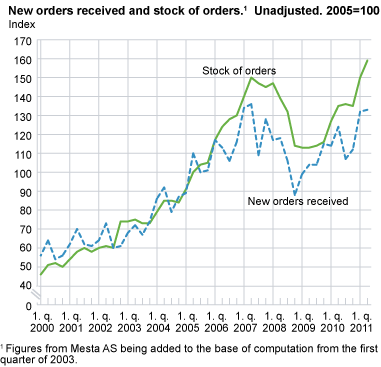Content
Published:
This is an archived release.
Increase in reserves of new housing projects
The company reserves of new residential buildings continue to increase, and at the end of the quarter are 67 per cent higher than in the same period last year.
The inflow of new residential building projects for the 2nd quarter is at the same level as the end of 2010, and 15 per cent higher than last year.
Growth in commercial sector
The inflow of new commercial buildings has increased by 25 per cent in the last quarter, and is now 11 per cent higher than the same quarter last year. The company reserves have increased by 16 per cent from the same period last year.
Decrease in new renovation projects
The inflow of renovation projects both for residential buildings and for commercial buildings has decreased compared to the same quarter last year. The reserves of renovation works in the residential and commercial sector rose by 2 and 18 per cent respectively.
Stable reserves in civil engineering works
There was a decrease of 10 per cent in the inflow of new civil engineering works in the last quarter, but this is still 6 per cent higher than last year. The value of the contractor reserves of civil engineering works is 4 per cent higher than both the last quarter and the same quarter last year.
Tables:
Contact
-
Statistics Norway's Information Centre
E-mail: informasjon@ssb.no
tel.: (+47) 21 09 46 42

